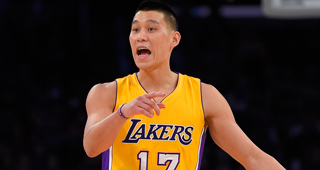Note: Portions of this piece appeared originally on Mid-Level Exceptional.
Article VII, Section 6(d) of the Collective Bargaining Agreement details the Bi-annual Exception.
While the Bi-annual Exception may not have the high profile or heavy impact of some other exceptions, it can still be incredibly useful in the right situation. In addition, the new CBA has made use of the BAE an important signpost for what teams plan to do in terms of the luxury tax.
How the Bi-annual Exception Works
The CBA dictates the specific size of the Bi-annual Exception each season: For the 2015-16 season, the BAE will have a first-year salary of $2,139,000. It is not tied to the value of the salary cap.
Teams cannot use the Bi-annual Exception in consecutive years: As one would expect from the name, teams cannot use all or part of the BAE two seasons in a row even if otherwise eligible.
Bi-annual Exception contracts can be no longer than two years: Any contract signed using the BAE can be no longer than two seasons and the second year cannot have a raise or decline larger than 4.5% of the first season salary. Single season contracts are fine. For example, Gary Neal signed a one-year contract for the BAE with the Wizards this summer.
Like the Mid-Level Exception and trade exceptions, the Bi-annual Exception can be split: Even though the BAE’s lower total amount and year limit make it difficult to actually fit multiple people, if teams can get players to agree they can do it.
Teams above the apron cannot use the Bi-annual Exception: This CBA limited a few mechanisms to only teams under the apron (a line exactly $4 million above the luxury tax) as a way of limiting the ways super spenders can acquire new players. As such, teams like the Cavaliers cannot use the BAE this season.
Using the Bi-annual Exception triggers the hard cap for that league year: Like using the full MLE or acquiring a player via sign-and-trade, the BAE being reserved for franchises under the apron means that teams who use the BAE are hard capped at the apron for the remainder of that league year to make sure no one takes advantage of timing to exploit the exceptions and then go over the apron. If you want to learn more about the NBA’s hard cap, please read my Mid-Level Exceptional piece from 2014.
Teams that use the Room Mid-Level Exception cannot use the Bi-annual Exception: One new trick in the current Collective Bargaining Agreement is the Room Mid-Level Exception, which teams deep enough under the cap get when they lose their exceptions. Since the BAE is one of the exceptions lost as a prerequisite to being able to use the Room MLE, teams cannot use both in the same league year. Similarly, a team cannot use the Taxpayer MLE and the BAE in the same season because teams over the apron cannot use the Bi-annual Exception. However, that one can get more complicated because a team on the fringe could sign a player within the confines of the Taxpayer MLE but have it work for part of the Non-Taxpayer MLE if the situation presents itself since the Non-Taxpayer MLE is larger. As such, I do not draw the same hard line for the Taxpayer MLE and BAE that I do for the Room MLE. (Author’s Note: If this paragraph made sense, you must really love this stuff.)
The Bi-annual Exception prorates starting on January 10 and expires on the last day of the regular season: An eligible team can use the Bi-annual Exception once the season starts but it begins to prorate on January 10, reducing until the last day of the regular season.
Recent uses of the Bi-annual Exception
For the 15-16 season, as of this writing, two teams have used the Bi-annual Exception: the Hornets on Jeremy Lin and the Wizards on Gary Neal.
The future of the Bi-annual Exception
Due to a rapidly rising salary cap and a Bi-annual Exception with a specific value, the BAE will languish in obscurity the next few seasons. After all, teams need to be in a sweet spot to use it: not too far under the cap where they lose their exceptions and not so high as to become barred from having it. That said, the timing could work out that the next CBA comes into place at the same time the revenue side settles down at the Bi-annual Exception can return to its place as a useful team-building piece. Ideally, the next Collective Bargaining Agreement will tether the yearly BAE amount to the cap itself to create a more reliable value. If those developments occur, it could become a nice source for low rotation players worth more than their minimum.



